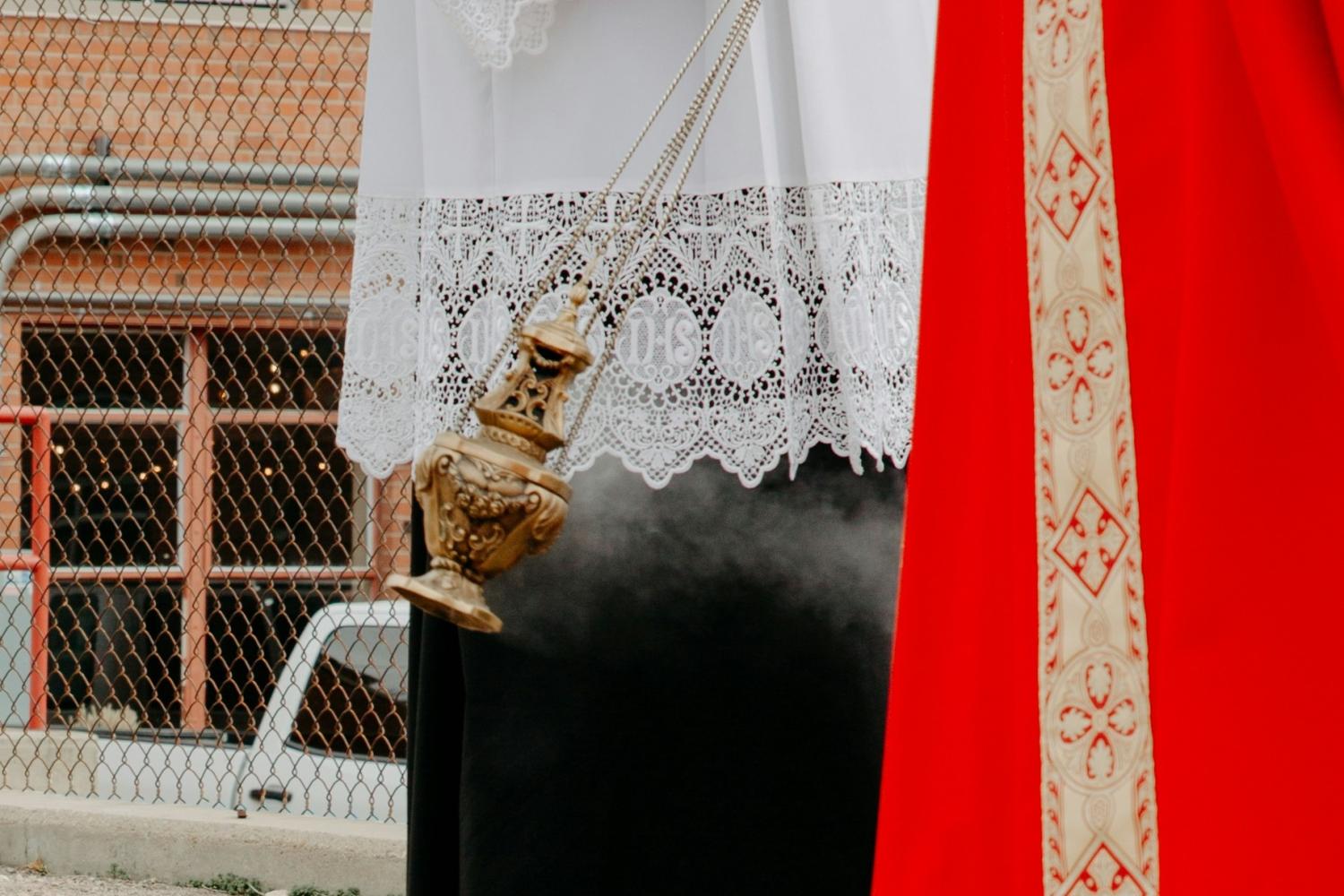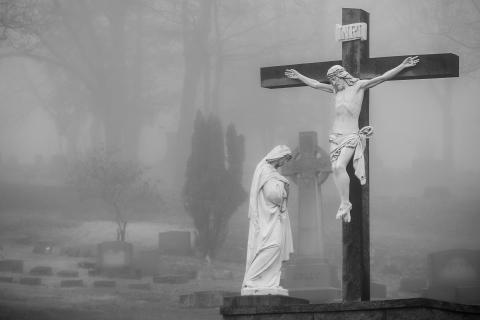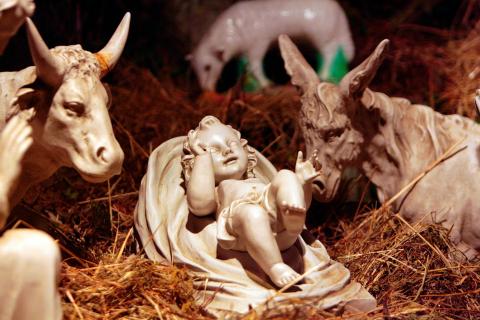
Dolce & Gabbana unveiled one of their new design collections at a fashion show on the Sant’Angelo Bridge in Rome several days ago. But the collection came with a surprising twist: all of it was inspired by “Catholic liturgical garb.” Shirts akin to priest chasubles; a color scheme dominated by white and black with some green, red, and purple; and “accessories” consisting of rosaries, thuribles, and incense burners all came center stage as models made their way up and down a catwalk lined with “movie extras dressed as cardinals.”
“Tribute or travesty?” is how the Catholic News Agency put their question about the event. It’s a good question: “some considered it an outrage to tradition or even blasphemous,” the CNA piece noted, associated “‘with ostentation and wealth rather than an image of the Church as poor, humble, and simple.” And of course, there’s probably something to that: “Catholic liturgical garb” merits a certain kind of respect, after all, given its function in the sacramental life of the Church. But others weren’t so sure. Dolce and Gabbana certainly didn’t seem to mean for the show to be “blasphemous” or “an outrage,” at least, but a more genuine tribute. “Every creation,” they said, “strikes a perfect balance between solemnity, devotion, discipline, and aesthetic as well as iconographic codes.” There was something of genuine beauty and honor they perceived in the liturgical clothing they took as their inspiration, and they seemed to want to highlight that in their designs. They didn’t intend to poke fun or demean or highlight the wrong things, in other words, but to underline the right ones.
And that points, perhaps, to an opening that’s being made for a different sort of dialogue between the sacred and the secular in contemporary culture. For Europe, especially, secularizing forces have pretty much done their work on the culture; they’ve suffused political and social life, to the extent that the Church is closer, in some ways, to a fading memory than an immediate threat. And the fading of that memory perhaps provides a little bit of room to recognize the good that the Church did (and does) have: the beauty, the tradition, the longing to lift the human person to splendor and glory. There’s space to acknowledge the attractiveness and resonance of the life of the Church in that way, rather than to worry about curtailing or undercutting it.
At least, that’s one way of answering the CNA's question in the event’s favor – that it was indeed a kind of “tribute.” And while the impulse to defend the Church and the treasures of her tradition is a necessary one, as is the desire to stand firm in the truth of what that tradition is really for, there may also be space to the lean into the opening that’s being offered, here. To agree that the life of the Church is and has been filled with beauty. That it's aspired, indeed, to strike a tone of solemnity and devotion. And that it’s done so because of the one it stands before: the One who is beauty, the One who merits the fullness of human devotion.


